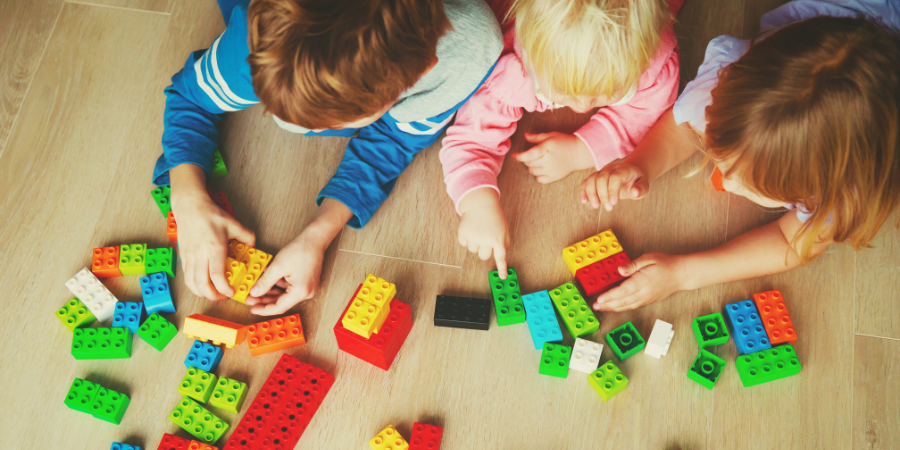Manipulating items that you have in your classroom environment can increase social interactions between students. Turning activities that may be intrinsically solitary endeavors into pair or small group activities can support a more collaborative setting and give your students opportunities to interact with one another.
In this example, create a shape built using LEGO® bricks. Provide your students with a photo of the completed shape, the appropriate number and color of LEGO®bricks, and visual communication cards to support students of all abilities as they communicate what they need to their peers.
Each student will get a set of LEGO®bricks in a different color so as they work to build the shape, the students must ask each other for the colored bricks they will need at each stage.
The visual cards in this example each represent a different color brick, as well as a size indication (big or small) so students will be prompted to ask their peers for the brick they need and can indicate the correct size and color.
This is one example of how to arrange what was once a solitary activity into one that encourages peer interactions and socialization! The key to this strategy is organization, preparation of materials, and providing the needed supports for your students.
The special education resources on this page were authored by Watson Institute’s special education consultant, Lisa Plastino, M.Ed.
How to Use Classroom Items to Support Social Interaction
If you have questions or concerns about the Watson Institute’s use of this information, please contact us.
